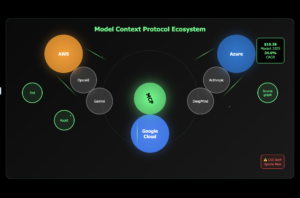Google’s newest Gemini 2.5 model aims for ‘intelligence per dollar’

Google just dropped the stable version of Gemini 2.5 Flash-Lite and they’ve essentially created a model that’s designed to be the workhorse for developers who need to build things at scale without breaking the bank.
Building cool things with AI can often feel like a frustrating balancing act. You want a model that’s smart and powerful, but you also don’t want to remortgage your house to pay for the API calls. And if your app needs to be fast for users, a slow, churning model is a non-starter.
Google says Gemini 2.5 Flash-Lite is quicker than their previous speedy models, which is a big claim. For anyone building a real-time translator, a customer service chatbot, or anything where a lag would feel awkward, this is huge.
And then there’s the price. At $0.10 to process a million words of input and $0.40 for the output, it’s ridiculously cheap. This is the kind of pricing that changes how you think about development. You can finally stop worrying about every single API call and just let your application do its thing. It opens the door for small teams and solo developers to build things that were previously only viable for big companies.
Now, you might be thinking, “Okay, it’s cheap and fast, so it must be a bit dim-witted, right?” Apparently not. Google insists the Gemini 2.5 Flash-Lite model is smarter than its predecessors across the board: reasoning, coding, and even understanding images and audio.
Of course, it still has that massive one million token context window—that means you can throw huge documents, codebases, or long transcripts at it and it won’t break a sweat.
And this isn’t just marketing fluff, companies are already building things with it.
Space tech company Satlyt is using it on satellites to diagnose problems in orbit, cutting down on delays and saving power. Another one, HeyGen, is using it to translate videos into over 180 languages.
A personal favourite example is DocsHound. They use it to watch product demo videos and automatically create technical documentation from them. Imagine how much time that saves! It shows that Flash-Lite is more than capable of handling complex, real-world tasks.
If you want to try out the Gemini 2.5 Flash-Lite model, you can start using it now in Google AI Studio or Vertex AI. All you have to do is specify “gemini-2.5-flash-lite” in your code. Just a quick heads-up: if you were using the preview version, make sure you switch to this new name before August 25th, as they’re retiring the old one.
Rather than just another model update from Google, Gemini 2.5 Flash-Lite lowers the barrier to entry so more of us can experiment and build useful things without needing a massive budget.
See also: OpenAI and Oracle announce Stargate AI data centre deal

Want to learn more about AI and big data from industry leaders? Check out AI & Big Data Expo taking place in Amsterdam, California, and London. The comprehensive event is co-located with other leading events including Intelligent Automation Conference, BlockX, Digital Transformation Week, and Cyber Security & Cloud Expo.
Explore other upcoming enterprise technology events and webinars powered by TechForge here.













